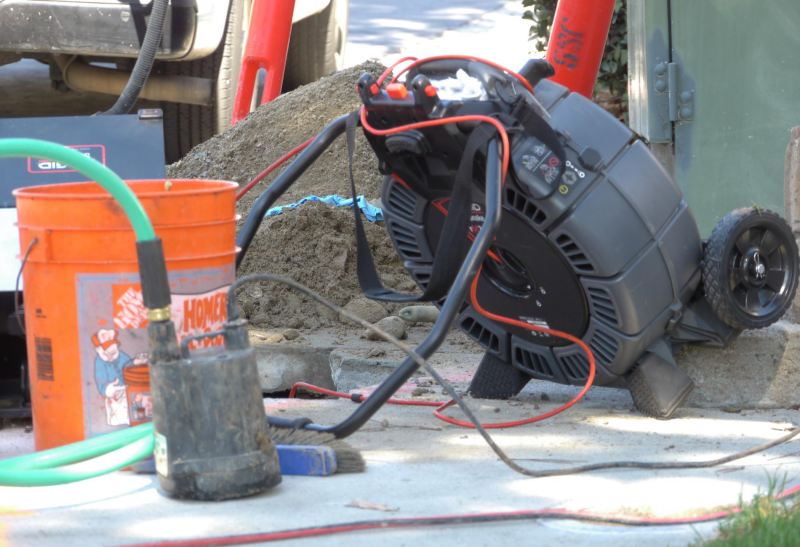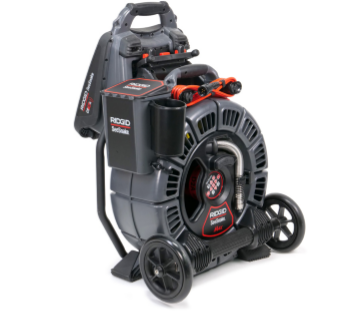How SeeSnake Camera Reels Help In The Fight Against Cross Bores
The RIDGID® SeeSnake® MAX™ rM200 series camera reels are ergonomic pipe inspection systems that can tackle a variety of applications. The rM200A model features a moderately stiff 61 m (200 ft) push cable that provides a good compromise between stiffness and the ability to navigate turns in the pipe. The rM200B model includes a stiffer, 50 m (165 ft) push cable with a dual-nested spring to navigate tight corners that are not usually passable with such a stiff cable.
The usefulness of the rM200B’s design lead to it helping in the fight against cross bores in California. Southern California Gas Company (SoCalGas) has been using the rM200B in its Sewer Lateral Inspection Program (SLIP). Since beginning in 2010, SLIP aims to inspect all sewer laterals located within SoCalGas’ 20,000-mile service territory, ranging from the US-Mexico border to the middle of Fresno. The rM200B is an important tool in their program, which aims to reduce the prevalence of these unseen hazards.
What is a cross bore?
A cross bore is an intersection of an underground utility by a second utility that can occur when the new line is installed using horizontal directional drilling (HDD), or horizontal boring. HDD is a growing trenchless utility installation practice that offers multiple benefits over trenching, including reduced project costs, less street disruption, and fewer environmental impacts.
When using HDD, a new line path is drilled into the ground horizontally. Once the path is drilled, the new line is attached to a reamer and then pulled back through the drill hole, setting the line underground. If the reamer breaks through an existing underground line, the resulting intersection of the two lines is known as a cross bore, or intrusion.
Cross bores can happen to any utility when installing a new line with HDD. However, when a sewer lateral is cross bored again by a gas main, it creates a hazardous situation that can lay unnoticed for years and worsen over time, according to the Cross Bore Safety Association.
If the drain deteriorates, becomes clogged, or leaks – events that are more likely to occur the older the drain becomes – a plumber using a “cutter” to clear the line may inadvertently cut the gas line, releasing natural gas into the sewer lateral. This pressurized gas can the migrate into the home or building, posing an immediate threat to human life and property.
Because of the high risk that ruptured cross bores carry, finding and removing cross bores is critical.
Adapting technology to assist in the search for cross bores
Many of the homes in south California are approaching the century mark in age, meaning many of SoCalGas’ inspections are of older cast iron laterals. Due to their older fittings and/or corrosion, these laterals are often difficult to push a camera through. The lack of a front side clean outs in these older neighborhoods can also hamper inspections.
In 2013, SeeScan and SoCalGas partnered to create a new camera technology that could meet the demands of SLIP.
Based on SoCalGas’ descriptions of the issues they were facing, SeeSnake camera engineers created a longer spring assembly as well as a stiffer push cable. Both were housed in the then-new RIDGID SeeSnake rM200 series as the D2B model. The system uses a 1″ color, self-leveling camera with a very short body.
Behind that is the longer spring that has another spring nested inside. The result is a small camera head with a gradual transition in stiffness before the push cable termination, which allows the camera to negotiate turns farther down the line. Once this system was employed, areas that could only be accesses roughly 15% of the time were visited again with a jump to 85%. A longer version of this camera system was also created for larger residences and apartment complexes.
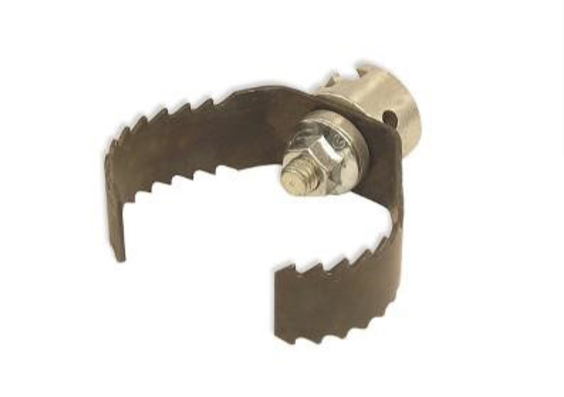
A cutter tool
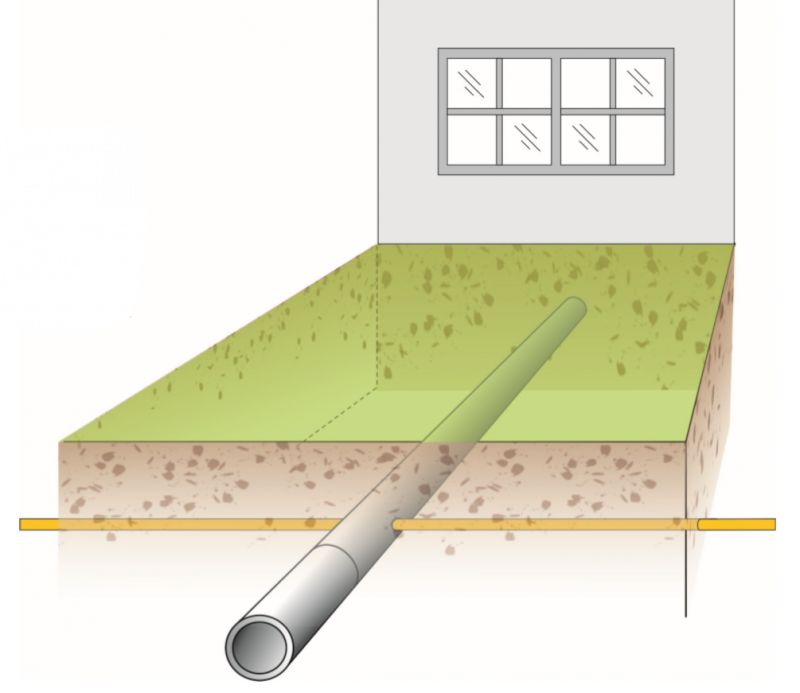
A cross bore of a sewer lateral by a gas main installed using HDD

A comparison of the rM200 D2A and D2B camera and spring assemblies (top). The D2B features a long, dual-nested spring to help the camera navigate turns farther downpipe. Both cameras include a 512 Hz FleXmitter® sonde.
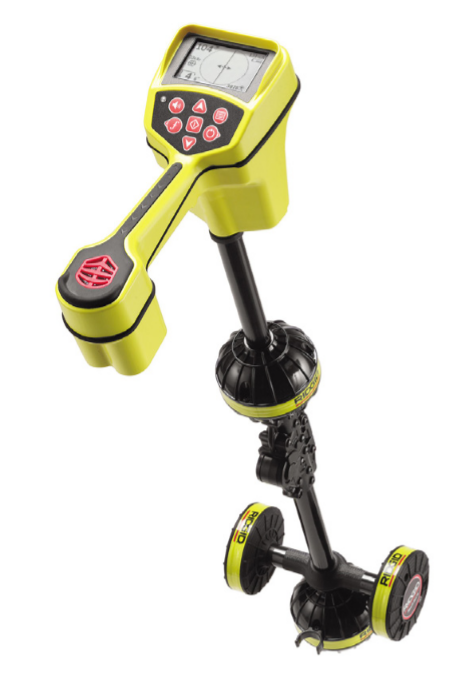
The FleXmitter is traceable by RIDGID SeekTech locators like the SR-20 locator (right) and preserves the camera’s ability to make turns.
SoCalGas also requested help in improving their ability to pinpoint the location of any cross bores that are found. Once a cross bore has been found, workers use a RIDGID SeekTech SR-20 receiver to find the location of the camera’s sonde, which is a remote transmitter installed in the camera heads. Low frequency sondes at 33 kHz posed a problem – the signal often couldn’t penetrate the cast iron laterals, preventing locators from obtaining accurate horizontal locations and depth readings.
To address this issue, SeeSnake camera engineers changed the frequency of the sondes in their camera systems to 512Hz – a much lower frequency that is easier to trace in cast iron pipes. Since they began using the newer cameras with 512 Hz sondes, SoCalGas has had more success in locating the camera head’s position, helping them find the exact location of the cross bore for removal.
SLIP’s success so far serves as an example to other gas providers undertaking similar projects to find and remove cross bores. It is also a testament to the success of partnerships between utility owners, manufacturers, and contractors.
As more utilities are installed, it will become increasingly important for cooperation between stakeholders to find ways to reduce hazards associated with underground utilities, protecting this critical services and enhancing safety across the nation.
Portions of this articles were taken from a case study featured in the Common Ground Alliance 2018 Annual Technology Report, “Increasing Efficiencies in Pre- and Post-Inspections for Cross Bores.”
To learn more about the SeeSnake rM200 series camera reels, contact your local RIDGID rep.


